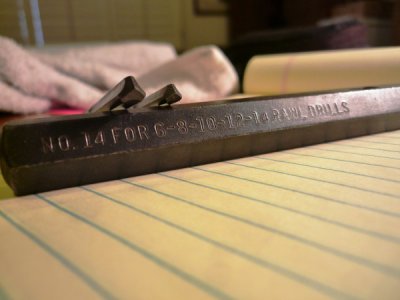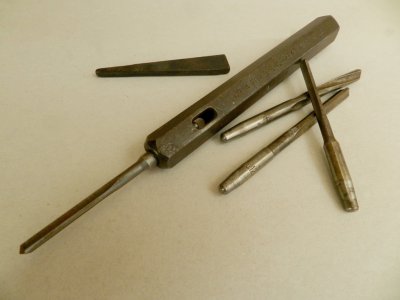- Joined
- Jan 22, 2011
- Messages
- 8,031
For one thing, not knowing the material would leave you guessing as far as how to treat them. Plus if they are hardener than the cast table and you really torque them down they will indent the underside of the slot. Granted, the studs and hex nuts that come from the high end suppliers are hardened, but the idea of sacrificial tee nuts makes sense to me.
When I have made nuts for this general purpose, I will stake the underside of the hole to prevent the stud from going all the way through, or simply stop the thread short of a complete thread through the nut.
btw, I have a couple of new 5/8" roughers and a used 3/4" in fair shape. We can get together sometime and I'll hand them off to you.
When I have made nuts for this general purpose, I will stake the underside of the hole to prevent the stud from going all the way through, or simply stop the thread short of a complete thread through the nut.
btw, I have a couple of new 5/8" roughers and a used 3/4" in fair shape. We can get together sometime and I'll hand them off to you.



